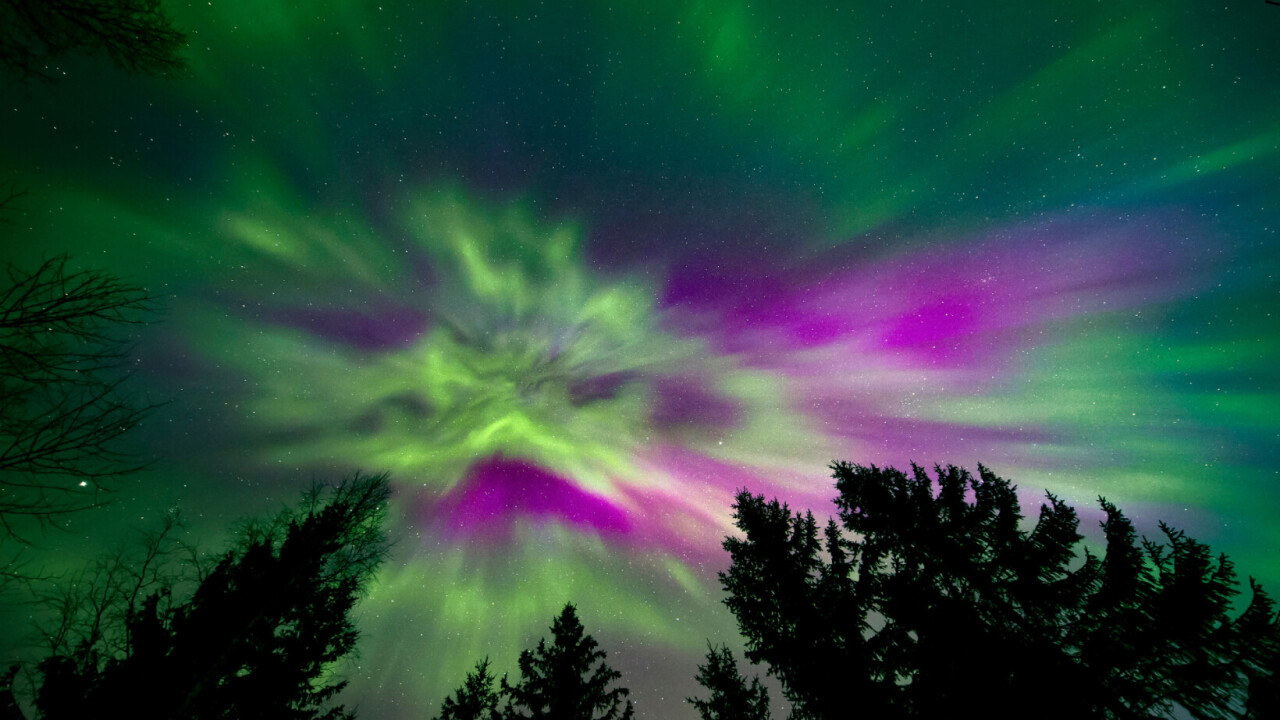
You’ve probably already seen the dazzling pics of the aurora that flooded social media over the weekend. Lucky onlookers were treated to streaks of green, pink, and purple dancing across the night sky from the UK to New Zealand.
??????? ???????? ?? ?????? – Comme si vous y étiez en accéléré !
Timelapse d’une heure – Mont Saint-Michel – Nuit du 10 au 11 Mai 2024
???ℎ??? ?????? / Tous Droits Réservés#aurore #auroreboreale #france #northernlights #aurores #nuit pic.twitter.com/ipL1k9onGr— Mathieu Rivrin – Photographies (@mathieurivrin) May 11, 2024
The breathtaking display on May 10 to 12 was triggered by the largest solar storm in over 20 years.
Solar storms occur when the Sun emits enormous bursts of energy in the form of solar flares and coronal mass ejections. These send streams of charged particles flying across space where they slam into Earth’s magnetic field — mixing with gases in our atmosphere, and sparking the aurora.
The European Space Agency’s Solar and Heliospheric Observatory (SOHO) captured the entire thing on camera.
The streaks of light you can see passing the space telescope in the video above are streams of charged particles that make up the so-called solar wind. The biggest of these bursts was sent to Earth on 11 May.
More solar megastorms are coming
If you, like me, slept through the mesmerising northern lights displays on the weekend — don’t worry, there’s more to come.
The Sun is currently approaching the peak of its 11-year activity cycle, known as the “solar maximum.”
Scientists predict we could witness an even more magnificent northern lights display later this year. When exactly that will occur, however, takes a bit of guesswork.
“Initially, it was predicted that the solar maximum would be in 2025, but it seems the sun has reached its peak earlier than expected,” said Rami Qahwaji, professor of visual computing at the University of Bradford in the UK.
Qahwaji is the founder of the Space Weather Prediction Group, which develops AI and computer vision technologies for monitoring sunspot activity and predicting solar storms.
AI could predict the next big solar outburst
The Group has created a tool it calls Automated Solar Activity Prediction (ASAP). The system is a set of AI models trained on thousands of satellite images of the Sun to predict the occurrence of solar storms.
“Our system successfully predicted the latest solar storms, which produced the northern lights seen across the UK last week,” said Qahwaji.
The professor predicts that more, perhaps even bigger storms will occur as early as a few weeks from now.
Hopefully I won’t be snoring my head off during the next aurora bonanza!
Get the TNW newsletter
Get the most important tech news in your inbox each week.





